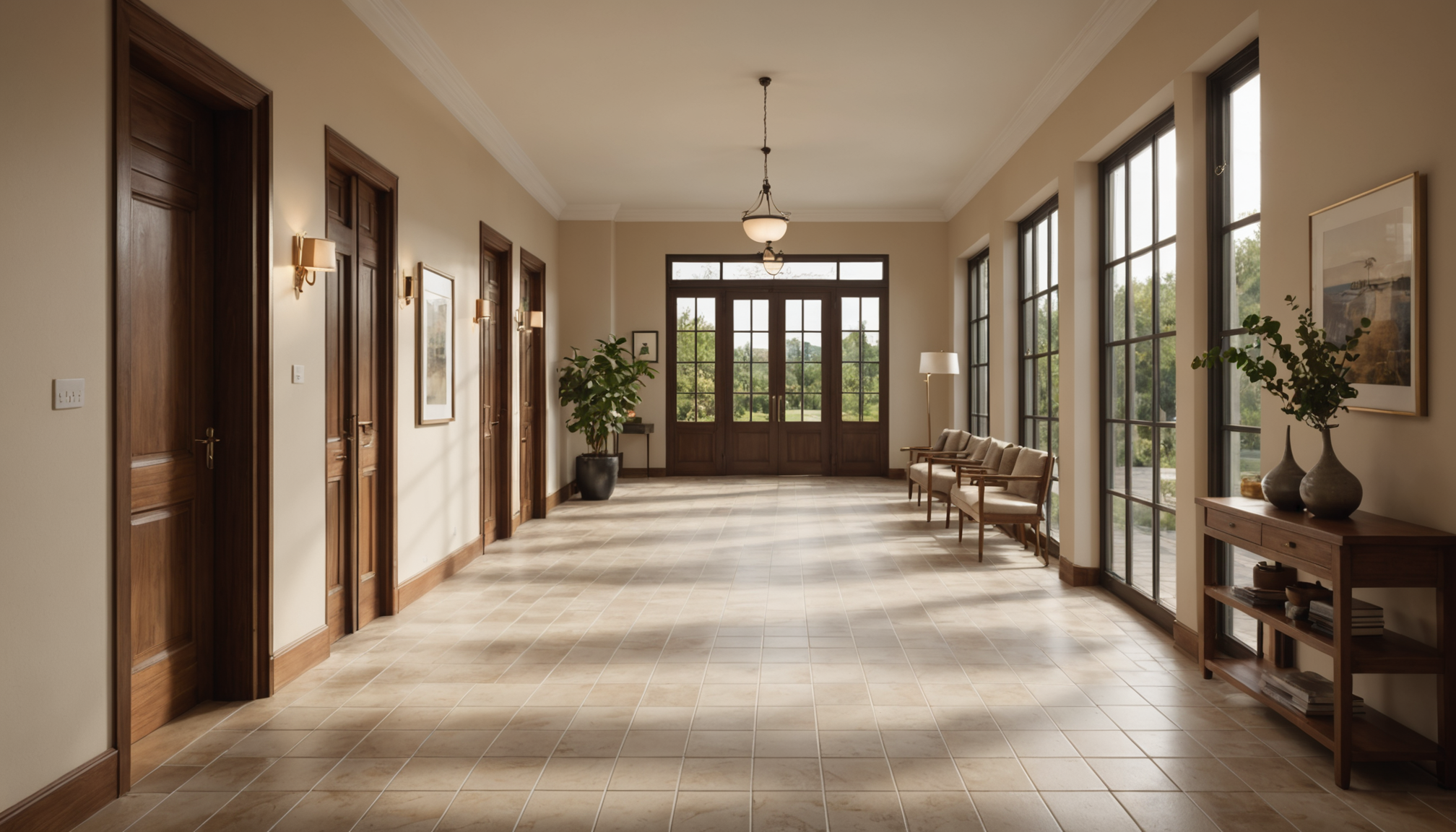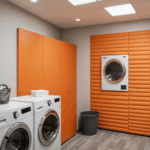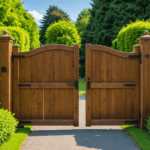When it comes to protecting floors from daily wear, the choice of materials plays a pivotal role in determining their durability and longevity. Selecting the correct materials not only enhances the aesthetic appeal of your space but also significantly contributes to minimizing wear and tear. Here’s an in-depth look into how to choose the right flooring materials for various needs and environments.
First and foremost, consider the type of traffic your floors will endure. For areas with high foot traffic, such as kitchens, hallways, and entryways, opt for materials that are known for their durability and resilience. Hard surfaces like ceramic tiles, vinyl, and laminate are excellent choices here because they can withstand heavy usage without showing signs of wear quickly.
In contrast, softer materials such as carpets or cork flooring might be more suitable for areas where comfort is a priority, like bedrooms or family rooms. These materials provide a softer underfoot feel but may require more maintenance to keep them looking pristine.
It is crucial to evaluate the moisture levels of different spaces within your home. For wet areas like bathrooms or basements, materials such as porcelain tiles or waterproof vinyl are ideal due to their resistance to moisture-related damage. Wood flooring might not be suitable in such environments unless it’s specifically designed to handle moisture.
The following table provides a comparison of common flooring materials, highlighting their benefits and drawbacks:
| Material | Benefits | Drawbacks |
| Ceramic Tile | Highly durable, water-resistant, easy to clean | Cold and hard underfoot, can be slippery when wet |
| Vinyl | Waterproof, available in various designs, cost-effective | Can be susceptible to scratches and dents |
| Laminate | Affordable, wood-like appearance, easy maintenance | Not suitable for wet areas, can feel synthetic |
| Hardwood | Timeless appeal, adds value to a home, durable | Susceptible to moisture, can scratch easily |
| Carpet | Comfortable, great for insulation, reduces noise | Stains easily, requires regular deep cleaning |
In addition to choosing the right material, the quality and grade of the material should also be considered. High-quality materials may cost more upfront, but they typically offer better performance and longer lifespans. Investing in superior quality flooring from the outset can result in lower maintenance costs and fewer repairs over time.
Lastly, consider the environmental impact of your flooring choice. Eco-friendly options, such as bamboo or recycled materials, are not only sustainable but also durable and stylish, making them an excellent choice for both conscientious homeowners and those looking for lasting quality.
Implementing regular cleaning routines
To maintain your floors in pristine condition and protect them from daily wear, establishing a regular cleaning routine is essential. Consistent upkeep not only enhances the appearance of your floors but also prolongs their lifespan by preventing the buildup of dirt and grime that can lead to damage over time. Here’s how to implement an effective cleaning routine:
1. Assess Flooring Type:
– Begin by identifying the type of flooring in each room. Different materials require different cleaning methods. For example, hardwood floors need a gentler touch than tiles or vinyl.
2. Daily Maintenance:
– Sweep or Vacuum: Daily removal of dust and debris is crucial. Use a soft-bristle broom for hardwood and laminate, while a vacuum with a hard-floor setting is ideal for tile and vinyl to avoid scratches.
– Spot Clean: Immediately wipe away any spills to prevent stains or warping on materials like wood.
3. Weekly Routine:
– Mop Appropriately: Cleaning solutions and techniques vary by material:
– For tile and vinyl, a damp mop with a mild detergent works well.
– Hardwood should be cleaned with a lightly dampened mop using a cleaner specifically designed for wood.
– Laminate floors need a special laminate cleaning product to avoid damage.
– Use Microfiber Materials: Employ microfiber cloths or mop pads to trap dirt effectively without causing scratches.
4. Monthly Deep Clean:
– Engage in a more thorough cleaning once a month:
– Buff Hardwood: Consider using a buffing product or machine to restore sheen to hardwood floors.
– Grout Attention: For tile floors, clean grout lines with a toothbrush and a mild bleach solution to prevent discoloration.
– Carpets: If you have carpets, use a vacuum with strong suction and consider using a professional steam cleaner periodically to remove deep-seated dirt.
5. General Tips:
– Avoid harsh chemicals and abrasive tools that might damage your floors.
– Always test a small, inconspicuous area when trying new cleaning products.
– Maintain a consistent humidity level in your home to prevent warping, especially for wood floors.
6. Seasonal Adjustments:
– During seasons when dirt or mud is prevalent, increase the frequency of cleaning to address the extra dirt being brought indoors.
– Consider placing mats at entry points to minimize the introduction of contaminants from outside.
By adhering to these steps and tailoring them to your specific floor types, you can significantly reduce wear and preserve the beauty of your floors for years to come. Regular care not only minimizes the risk of damage but also maintains the clean and polished look of your home, contributing to a healthier and more comfortable living environment.
Utilizing protective coverings
Using protective coverings effectively is a highly impactful strategy for safeguarding your floors from daily wear and tear. These coverings can take many forms, each suited to particular needs and environments. Understanding and implementing the right type of protection will extend your floor’s life and keep them looking their best.
Begin by considering area rugs and runners. These are perfect for high-traffic areas such as hallways, entryways, and living rooms. Not only do they add an aesthetic element to your space, but they also serve as a physical barrier, absorbing the brunt of foot traffic and preventing direct contact with your flooring. This helps to avoid scratches, scuffing, and dinging that can occur over time. Opt for rugs with non-slip backing to prevent accidents and protect against shifting and sliding.
Chair and furniture pads are another valuable tool. They help to prevent scratches and dents caused by the constant movement of furniture, especially on hardwood and laminate floors. Choose pads made of felt or rubber, which can be easily adhered to the feet of chairs, tables, and sofas. These materials provide a smooth surface that allows for easy movement without causing damage.
Using floor mats in strategic locations is also essential, particularly in areas prone to moisture and dirt accumulation, like entrances or in front of sinks. Door mats act as the first line of defense against outdoor elements, capturing dirt, moisture, and debris before they reach your floors. Ensure that these mats are durable and water-resistant, designed to withstand the elements and prevent water damage to underlying surfaces.
For more comprehensive coverage, consider vinyl or plastic floor protectors, particularly in homes with heavy furniture or appliances that can grind heavy grooves into your floors over time. These protectors are clear, allowing the beauty of your flooring to show through, while offering a robust shield against potential damage. They are especially useful in office spaces where rolling chairs can erode flooring rapidly.
In scenarios where renovation or construction occurs in your home, employ temporary surface protection products like adhesive films or durable paper products. These solutions are designed to withstand significant impact and protect against spills and abrasions. They are easy to install and remove, making them a savvy choice during projects that could compromise the integrity of your flooring.
Incorporating these protective measures into your floor maintenance routine can offer significant benefits. Not only do they preserve the visual appeal and integrity of your flooring, but they also help guard against the costs and inconveniences associated with repairs and premature replacements. Investing in protective coverings is a proactive step towards maintaining the value and beauty of your home, ensuring that your floors remain an attractive and functional feature for years to come. By taking a comprehensive approach to floor protection, you are enhancing both the aesthetic and practical aspects of your living spaces.
Managing foot traffic effectively
One of the most effective ways to preserve the condition of your floors is by managing foot traffic strategically. High foot traffic can lead to accelerated wear and tear, so it is important to implement measures that can minimize this impact.
Start by assessing the flow of traffic in your home. Identify areas that experience the most foot traffic, such as entryways, hallways, and kitchen areas. Once these high-traffic zones are determined, consider rearranging your furniture to naturally guide movements through less vulnerable areas. This not only helps to evenly distribute wear across your floors but can also enhance the flow and aesthetic appeal of your living spaces.
Encouraging the removal of shoes at the entrance is another effective strategy. Shoes can track in dirt, moisture, and sharp particles that can scratch and wear the flooring surface. Consider placing a shoe rack or a dedicated space for footwear near entry doors, accompanied by a comfortable bench for convenience. This simple practice can significantly reduce the amount of abrasive materials brought into your home.
In high-traffic commercial environments or homes with open floor plans, using designated walkways can be highly beneficial. Clearly marked or visually distinct pathways, perhaps delineated with different flooring materials or patterns, can steer people along intended routes, preventing random wear across your floors.
Incorporating rugs and runners has already been highlighted, but it’s worth reiterating their importance in managing foot traffic. Using these protective elements in areas of frequent movement, such as at entry points or along corridors, can not only capture dirt and moisture but also reduce direct contact with the flooring. Regularly cleaning these coverings is crucial to ensure they don’t become a secondary source of dirt and grit.
Furthermore, make use of well-positioned furniture or room dividers to break up long spans of floorboard or tile. This approach can help interrupt and redirect foot traffic, distributing it more evenly across different sections of the floor. Additionally, by placing seating or decor along high-traffic paths, you create natural buffers that can ease the strain on your floors.
Encourage mindful walking habits within your spaces. Family members and guests can be subtly reminded to step lightly and avoid dragging their feet or furniture. Establishing a no-running rule indoors, especially in households with children, can also help protect your floors from unnecessary stress.
Finally, consider seasonal adjustments. During wet or muddy seasons, increase the use of mats and rugs and remind everyone to take extra care in keeping floors clean and dry. This mitigates potential hazards and damage driven by environmental factors.
By understanding and controlling the flow of foot traffic in your home, you can greatly diminish the negative impact on your floors, maintaining their beauty and functionality over time. With thoughtful planning and consistent practice, these efforts help ensure your flooring remains a lasting highlight of your home.
Addressing spills and stains promptly
Accidents happen, and when it comes to maintaining pristine floors, quick action is essential. Whether it’s a spill from a morning coffee or an unexpected pet accident, addressing these incidents promptly can prevent stains and lasting damage to your flooring.
For hardwood or laminate floors, any liquid spill can be particularly harmful if left unattended. Immediately blotting the spill with a dry cloth is crucial to absorb as much liquid as possible before it seeps into the seams or grain, potentially causing warping or discoloration. Following initial absorption, a slightly damp cloth can be used to wipe the area clean, ensuring no residue remains that could lead to staining. Avoid using overly wet materials or harsh cleaning products to prevent further damage.
On tile or vinyl surfaces, while these materials are more resistant to moisture, quick cleanup is still important to avoid stains or slippery surfaces that can become a safety hazard. Use absorbent paper towels to soak up the spill first. For sticky or sugary substances, a damp cloth with a mild detergent will ensure the area is thoroughly cleaned without leaving a slippery film that might attract dirt or cause slipping.
When dealing with carpeted areas, spills can be particularly challenging as liquids can quickly penetrate the fibers, potentially resulting in set-in stains. Start by blotting the spill gently with a clean, dry cloth without rubbing, which can push the liquid further into the carpet fibers. For deeper cleansing, a carpet stain remover specifically designed for the type of fabric in your carpet is recommended. Follow the instructions carefully to ensure effective stain removal without damaging the carpet.
For all types of flooring, once the spill is cleaned, consider using a fan to fully dry the area. This helps prevent any lingering moisture that could lead to mold or mildew, particularly in carpets or areas with less ventilation.
Proactively addressing spills requires vigilance and quick reaction, establishing a routine that minimizes the risk of damage before it occurs. Keeping appropriate cleaning supplies handy and educating all household members on prompt cleanup procedures can go a long way in preserving the integrity of your flooring.
In conclusion, protecting your floors from daily wear involves a comprehensive approach that combines choosing the right materials, maintaining regular cleaning routines, utilizing protective coverings, managing foot traffic, and promptly addressing spills and stains. With these strategies, you can ensure that your floors remain not only functional but a beautiful aspect of your home for years to come. Investing time and effort in floor care maximizes their lifespan, enhances your living experience, and contributes to the overall value of your property.


